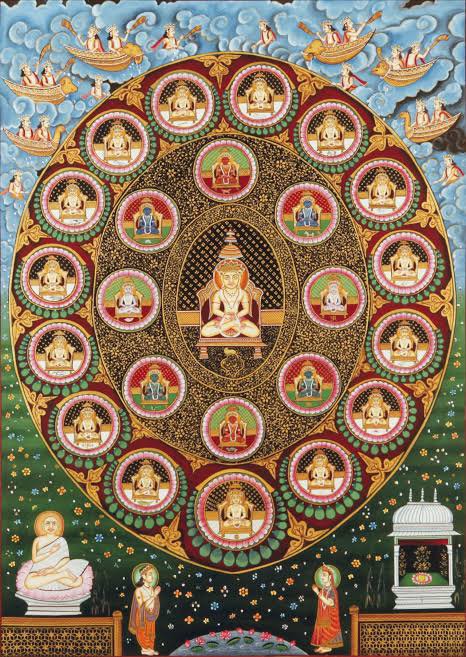In Jainism, Tirthankars is said to be the winner of all tendencies. The word ‘Tirthankara’ is a combination of ‘Teertha’ and ‘Sansara’. Tirtha refers to a place of pilgrimage and samsara refers to worldly life.
Tirthankara is the originator of a pilgrimage which is the way to be free from the illusion of the infinite ocean of birth and death. Jainism is one of the oldest religions in the world, with some academics claiming that it dates back to the pre-Vedic Indus Valley Civilization.

Who are Tirthankaras?
A Tirthankara teaches the path to attain moksha or liberation. Tirthankara is not a divine incarnation. A Tirthankara is an ordinary soul who takes birth as a human being and attains the status of a Tirthankara through rigorous penance, peace, and meditation practices. That is why Tirthankara is defined as the highest pure evolved state of the soul and not as an incarnation of God.
Tirthankaras were not religious founders, but great omniscient teachers who became famous at different stages of human history. The Tirthankaras attained the highest spiritual purpose of existence and then taught their contemporaries how to reach there by transcending the secure shackles of spiritual purity. Each successive Tirthankara preaches the same underlying Jain philosophy, but in the age and culture in which they teach, Tirthankaras teaches how to nuance the Jain way of life in different ways.
Characteristics and Features of Tirthankaras
A tirtha is a religious place for Hindus. Most of the pilgrimage centers of any religion in India are located on the banks of rivers. A Tirthankara is the founder of a Tirtha. Tirthankaras acquire knowledge and then teach others how to follow his path. At the end of his human life, a Tirthankara attains Moksha or liberation.
In Jain belief, Tirthankaras are supreme beings who have attained ultimate eternal happiness by attaining liberation from the cycle of birth and death. Tirthankaras show others the path to salvation by preaching to them on dharma, the value of human life and liberation from slavery, attainment of nirvana or liberation. A Tirthankara not only attains salvation for himself but also preaches and guides all those who sincerely seek Nirvana.
Name, Symbol, Birthplace and Color of 24 Tirthankaras
1 Rishabhanatha (Adinath) – Bull – Ayodhya – Golden
2 Ajitnath – Elephant – Ayodhya – Golden
3 Sambhavnath – Horse – Shravasti – Golden
4 Abhinandan Nath – Monkey – Including Mountain – Golden
5 Sumatinath – Stork – Ayodhya – Golden
6 Padmaprabha – Padma – Including the mountain – Red
7 Suparshvanath – Swasti – including mountain – golden
8 Chandraprabha – Crescent Moon – Chandrapuri – White
9 Pushpadant – Crocodile – Kandi – White
10 Sheetlanath – Srivatsa – Bhadrak Puri – Golden
11 Shreyansnath – Rhinoceros – including mountain – golden
12 Vasupujya – Buffalo – Champapuri – Red
13 Vimalnath – Pig – Kampilya – Golden
14 Anantnath – Eagle/Shahi Jas – Ayodhya – Golden
15 Dharmnath – Vajra – Ratnapuri – Golden
16 Shantinath – Antelope or Deer – Hastinapura – Golden
17 Kunthunath – Goat – Hastinapur – Golden
18 Arhanatha – Nandyavarta or Fish – Hastinapura – Golden
19 Mallinath – Kalash – Mithila – Blue
20 Munisuvrat – Tortoise – Kusagranagar – Black
21 Naminath – Blue Lotus – Mithila – Golden
22 Neminath – Conch – Dwarka – Black
23 Parshvanath – Snake – Kashi – Blue
24 Mahavir – Lion / Lion – Kshatriyakundi / Kshatriyakund – Golden
